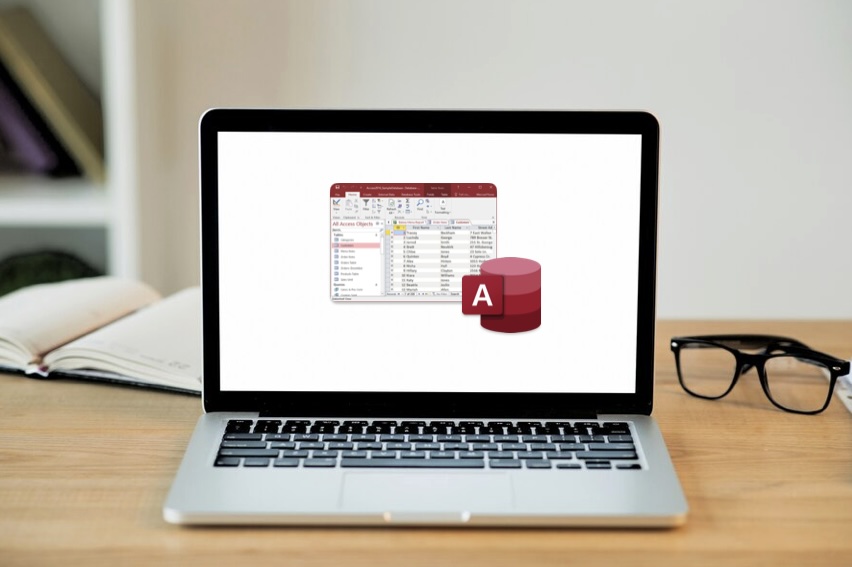Creating and managing databases can be complex, but Microsoft Access 2010 makes it easier with its robust form tools. This article will dive deep into the world of Access 2010 forms, exploring how they can simplify data entry, streamline data management, and enhance your database experience. Whether you’re a beginner or an experienced database administrator, understanding how to effectively use Access 2010 forms is key to maximizing the functionality of your databases.
What is an Access 2010 Form?

An Access 2010 form is a graphical user interface that allows users to interact with the data stored in a database. It provides a simpler and more intuitive way to enter, edit, and view data without directly interacting with the database tables. By using forms, you can ensure data accuracy and ease the process of data handling.
Benefits of Using Access 2010 Forms
Access 2010 forms offer several advantages over traditional data entry methods, providing users with simplified data entry processes, enhanced data validation, improved user interaction, and customization options. Let’s delve into each benefit in detail:
Simplified Data Entry
Forms in Access 2010 provide users with a familiar and intuitive interface for entering data, resembling a paper document. This familiarity reduces the learning curve for users, making the data entry process more efficient and less error-prone. By presenting fields in a structured layout, forms guide users through the data entry process, reducing the likelihood of missing or incorrectly entered information.
Data Validation
One of the key advantages of Access 2010 forms is their ability to validate data in real-time as it is entered. This feature ensures data integrity by enforcing rules and constraints specified by the database designer. Common types of data validation include:
- Field Formatting: Forms can specify the format in which data should be entered, such as dates, phone numbers, or currency values, preventing users from entering invalid formats.
- Range Checks: Forms can enforce minimum and maximum limits for numeric fields, ensuring that entered values fall within acceptable ranges.
- Referential Integrity: Forms can enforce referential integrity constraints, preventing users from entering values that violate relationships between related tables.
Enhanced User Interaction
Forms allow database designers to create user-friendly interfaces that hide the underlying complexity of database structures. Through layout customization, forms can present data in a clear and organized manner, improving user comprehension and interaction. Key features that enhance user interaction include:
- Navigation Controls: Forms can include navigation controls such as buttons and tabs, enabling users to navigate between records or switch between different views easily.
- Interactive Elements: Forms can incorporate interactive elements such as drop-down lists, checkboxes, and command buttons, allowing users to perform actions such as selecting options, toggling settings, or triggering processes.
- Feedback Mechanisms: Forms can provide feedback to users in real-time, such as error messages for invalid data entry or confirmation messages upon successful submission, enhancing user confidence and satisfaction.
Customization
Access 2010 forms offer a high degree of customization, allowing designers to tailor the form layout and functionality to meet specific user requirements. Customization options include:
- Field Selection: Forms can include only the fields necessary for data entry, hiding irrelevant or sensitive fields to streamline the user experience.
- Layout Design: Forms can be designed with custom layouts, including the arrangement of fields, labels, and controls, optimizing usability and visual appeal.
- Instructional Elements: Forms can include instructions, tooltips, and help text to guide users through the data entry process, reducing errors and enhancing user confidence.
Creating Your First Access 2010 Form

Getting started with Access 2010 forms is straightforward. Here’s a simple guide to creating your first form:
Open Your Database
Before you can create a form, you need to open your database in Access 2010. Launch the Access application and locate the database file you want to work with. Click on it to open or use the ‘File’ menu to navigate to ‘Open’ and select your database.
Use the Form Wizard
Access 2010 provides a handy tool called the Form Wizard to streamline the form creation process. To access it:
- Navigate to the ‘Create’ tab on the Ribbon at the top of the Access window.
- Click on ‘Form Wizard’ in the Forms group.
The Form Wizard will then guide you through several steps to create a form based on your existing tables or queries.
Select Fields
In this step, you’ll choose the fields from your tables or queries that you want to include in your form. This selection is crucial as it determines what data will be displayed and collected through the form. The Form Wizard will present you with a list of available fields, and you can:
- Select individual fields by clicking on them.
- Use the ‘>>’ button to add all fields or the ‘>’ button to add selected fields to your form.
Take your time to consider which fields are essential for your form’s purpose and layout.
Choose a Layout
Access offers various layout options to display your form’s data effectively. Common layouts include:
- Columnar: Organizes fields vertically, one below the other, suitable for forms with a single record displayed at a time.
- Tabular: Arranges fields in a grid format, ideal for forms displaying multiple records simultaneously.
- Justified: Distributes fields evenly across the form’s width, providing a balanced layout.
Select the layout that best fits your form’s requirements and visual preferences.
Refine the Design
After the Form Wizard completes the initial form creation process, you can refine and customize the form further in Design View. Design View allows you to make detailed adjustments to the form’s layout, appearance, and functionality. Here are some common tasks you can perform in Design View:
- Resize and rearrange fields.
- Add labels, images, or shapes for clarity and aesthetics.
- Apply formatting to enhance readability.
- Incorporate controls like buttons or combo boxes for user interaction.
Take advantage of the design tools and features available in Access to fine-tune your form to perfection.
Save Your Form
Once you’re satisfied with the form’s design, it’s essential to save your work to preserve your progress and make the form accessible within your database. To save your form:
- Click on the ‘File’ tab on the Ribbon.
- Select ‘Save As’ or ‘Save Object As’ depending on your preference.
- Provide a meaningful name for your form in the ‘Save As’ dialog box.
- Choose the appropriate location within your database to save the form.
- Click ‘OK’ to confirm and save your form.
Giving your form a descriptive name will make it easier to identify and manage within your database environment.
Best Practices for Designing Access 2010 Forms
When designing Access 2010 forms, adhering to best practices ensures optimal usability, data integrity, and aesthetic appeal. Let’s explore these best practices in detail:
- Keep It Simple: To prevent clutter and confusion, include only the necessary fields on your forms. By streamlining the information presented, users can focus on essential data entry tasks without being overwhelmed by unnecessary elements.
- Group Related Fields: Utilize grouping techniques to organize and present related fields together. This logical grouping enhances the form’s usability, making it easier for users to navigate and understand the relationships between different data inputs.
- Implement Data Validation: Incorporate robust data validation mechanisms to enforce integrity and accuracy. Utilize features such as required field validation, format checks (like dates or phone numbers), and range limits to ensure that entered data meets predefined criteria, reducing errors and maintaining data consistency.
- Enhance Visual Appeal: Utilize design elements such as color schemes, fonts, and spacing to create visually appealing forms. Aesthetically pleasing layouts not only improve readability but also contribute to a positive user experience. Strive for a balance between functionality and aesthetics to engage users and encourage efficient interaction with the form.
- Prioritize User Accessibility: Consider the needs of all users, including those with disabilities, when designing forms. Ensure that the form layout and functionality comply with accessibility standards, such as providing alternative text for images and using clear, concise language. Enhancing accessibility ensures that all users can interact with the form effectively, promoting inclusivity and usability.
Advanced Techniques
Mastering advanced techniques in Access 2010 form design empowers users to create highly functional and dynamic forms that optimize data presentation and user interaction. Let’s explore these advanced techniques in detail:
- Conditional Formatting: Highlight important fields, or those that need attention, by using conditional formatting.
- Subforms: Integrate subforms to show related data from different tables or queries in a single form.
- Macros: Automate common tasks within your forms using macros, enhancing efficiency and functionality.
Conclusion
Access 2010 forms are a powerful tool for anyone who needs to manage data entry and database interactions in a user-friendly way. By following the guidelines and practices outlined in this article, you can create effective and efficient forms that enhance your data management capabilities. Whether you are looking to streamline data entry processes, improve data integrity, or create a more engaging user experience, Access 2010 forms provide the tools you need to achieve your objectives.
FAQ
A: Yes, Access 2010 forms are designed to be used in a multi-user environment, allowing multiple users to enter data simultaneously.
A: You can secure your forms by implementing user authentication and using Access’s user-level security features to control access to data.
A: Yes, Access 2010 can connect to SQL databases using ODBC connections, allowing forms to interact with larger, more robust databases.
A: While Access 2010 forms are quite versatile, they are best used with data types supported by Access. For complex data types like BLOBs or very large datasets, other solutions might be more appropriate.



